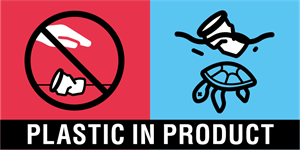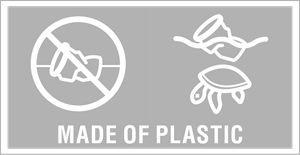Punto Qpack es una empresa comprometida con el respeto al medio ambiente con una amplia oferta de envases biodegradables y compostables, bolsas ecológicas con certificados sostenibles, vasos de cartón libres de plástico y vajilla desechable 100% reciclable.
.png)
Pioneros en la introducciĂłn de envases compostables de fibra
Llevamos más de 20 años sirviendo a empresas del sector HORECA con packaging de calidad que mejor se adapta a cada uno de nuestros clientes, ayudándoles a presentar sus productos de manera diferencial.
Buscamos las mejores soluciones ecológicas y alternativas sostenibles con envases compostables de comida para llevar de fibra de caña de azúcar, hoja de palma, madera y bambú. Además, vajilla desechable ecofriendly como pajitas de papel, platos de cartón y de fibra, cubiertos y agitadores de madera, etc.
ÂżDĂłnde reciclar nuestros vasos biodegradables?
Encuentra la mejor manera para desechar nuestros vasos de cartĂłn para cafĂ© para una correcta gestiĂłn de residuos. Para más informaciĂłn acerca de la gestiĂłn de residuos en cada paĂs, por favor ponte en contacto con:
- Ecoembes (España)
- Ponto Verde (Portugal)
- Eco-Emballages (Francia)
- Adelphe (Francia)
¿Qué es la normativa europea para la prohibición de los plásticos de un solo uso a partir de 2021?
A partir del 3 de julio de 2021 la UE declaró restricciones a la introducción en el mercado y comercialización de cubiertos, platos, pajitas, agitadores de bebidas de cualquier plástico, bandejas y recipientes de porex con el objetivo de reducir el impacto excesivo de este tipo de residuos sobre el medio ambiente.
Con la entrada en vigor de esta normativa la UE declara especificaciones de marcado armonizadas:
Los vasos de cartón y papel para bebidas fabricados parcialmente con plástico llevarán el siguiente marcado impreso. Podrán ser vasos de papel recubiertos de PE, PLA, bioPBS, etc.

Los vasos para bebidas frĂas fabricados totalmente con plástico llevarán el siguiente logo impreso por defecto. Destacan los vasos de material PP, PET, PS, PLA y rPET.

En relación a las botellas PET se exigirá a partir del 3 de julio de 2024 requisitos de diseño por los cuales las tapas y tapones deberán permancer unidos al recipiente (hasta capacidades de 3 litros). Además, desde 2025 entre el 25% y 30% de las botellas deberán ser de plástico reciclado rPET.
Para reducir el consumo los Estados miembros adoptarán las medidas necesarias para lograr una reducción ambiciosa y sostenida del consumo de los productos de plástico de un solo uso para el 2026 en comparación con 2022 (50% reduccion en España).
Utilizamos materias primas certificadas
Estamos comprometidos con el medioambiente y asĂ queda reflejado en nuestros productos.
PEFC trabaja para promover buenas prácticas en la gestión de los bosques y asegurar que la madera se produzca respetando los más altos estándares ecológicos, sociales y éticos.
El Forest Stewardship Council® está dedicado a promover el manejo forestal responsable en todo el mundo. El FSC® ayuda a cuidar de los bosques para las generaciones futuras.
¿Qué es el código de color de las basuras de reciclaje?
- La basura de color amarillo: Envases plásticos, botellas y metal.
- La basura de color verde: El cristal y vĂdrio.
- La basura de color azul: Papel, cartĂłn, revistas, periĂłdicos.
- La basura de color negro: El resto, los desechos orgánicos.
¿Cuál es la diferencia entre envase biodegradable y compostable?
- Envase biodegradable es aquel que se degrada estando en contacto con el medio ambiente pero no tiene porque ser compostable. Un envase biodegradable puede descomponerse en los elementos quĂmicos que lo conforman, debido a la acciĂłn de agentes biolĂłgicos, como plantas, animales, microorganismos y hongos, bajo condiciones ambientales naturales; es decir, que puede descomponerse en nutrientes y biomasa, en condiciones que se dan normalmente en la naturaleza. Siguiendo esta definiciĂłn, cualquier producto es biodegradable, pero lo realmente importante para el medio ambiente es el tiempo en el que este material se degrada.
- Envase compostable es biodegradable pero además se composta, es decir, se degrada en contacto con el resto de residuos orgánicos convirtiĂ©ndose en compost o abono. Envase compostable es aquel que puede biodegradarse por acciĂłn microbiolĂłgica en un corto perĂodo de tiempo y sin dejar residuos visibles ni tĂłxicos. La clave está en que los tiempos se acortan: para que pueda considerarse compostable, un material debe biodegradarse a la vez que el resto de materia orgánica que llega a una planta de compostaje.
¿Qué es la etiqueta de la AIB Vinçotte "OK biodegradable"?
Creado en 2009, este sello mide la cantidad de carbono procedente de fuentes renovables con respecto a carbono fósil dentro de una materia, con el fin de dar valor a los productos procedentes de fuentes renovables. De acuerdo con el tipo de materias primas renovables (% bio) dentro de un producto, Éste producto puede ser certificado con 1 estrella bio, 2 estrellas bio, 3 estrellas bio o 4 estrellas bio
¿Qué es la etiqueta "OK Compost" de la AIB Vinçotte?
Se trata de una etiqueta europea difundida por la agencia de Bélgica Aib Vinçotte que garantiza que los componentes de un producto pueden ser compostados en una zona de compostaje industrial o profesional, sin efectos perjudiciales para la calidad del compost. Cuando llega el momento de la descomposición, es necesaria la temperatura más alta posible (más de 55 ° C). Existe Compost Home etiqueta que garantiza que los componentes del producto pueden ser compostados en un abono privado o en un tambor. Si el proceso de compostaje va bien, el producto se descompone en varios meses.
¿Qué es la etiqueta DIN CERTCO?
Es una etiqueta europea difundida por la agencia alemana, Din Certco, que equivale a la norma europea EN 13432 y que concierne a la biodegradabilidad y a la Compostabilidad.
¿Qué es la etiqueta ecológica europea?
Creada en 1992, la etiqueta ecolĂłgica europea es la Ăşnica etiqueta oficial que puede ser utilizada dentro de todos los estados miembros de la uniĂłn Europea. Por el momento se utiliza principalmente en los productos de limpieza del hogar.
¿Qué es la norma europea EN 13432?
Es una norma que concierne a los embalajes y los desechos de los mismos. Esta norma define y encuadra las caracterĂsticas de los embalajes y productos valorados para la biodegradaciĂłn y la compatibilidad. Se basa en 5 aspectos:
- Compostabilidad.
- Biodegradabilidad.
- Desintegrabilidad.
- Calidad del compost final.
- Ecotoxicidad.
¿Qué es la etiqueta Punto verde?
La etiqueta “punto verde” significa que la empresa ha hecho una contribución a una organización de reciclaje autorizada, pero eso no quiere decir que el producto es reciclado.
¿Qué significan las siglas PLA y PSM?
El PLA y el PSM son resinas sintĂ©ticas vegetales provenientes del almidĂłn. PLA es una abreviaciĂłn de ácido poliláctico que es el resultado del azĂşcar con la fermentaciĂłn del almidĂłn. Es un material transparente y resistente. Es una de las alternativas naturales al polietileno, 100% biodegradable y compostable. El PSM es un polĂmero de almidĂłn, sĂłlido y resistente al microondas, 100% biodegradable y compostable.
¿Qué es la marca medioambiental NF?
Creada en 1991, la etiqueta exige ciertos criterios de elegibilidad concerniendo los materiales altamente tóxicos utilizados por las industrias contaminantes más tradicionales (pintura, barnices, muebles y la industria de bolsas).
 Español
Español Português PT
PortuguĂŞs PT